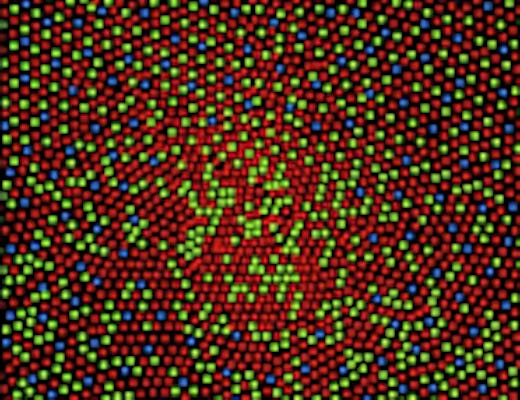Case Study – How the Neo Spectrometer Drastically Improves Filter Quality
Admesy develops spectroradiometers, colorimeters and light meters. They are used in large volume 24/7 production testing as well in smaller volume niche system manufacturers. One example is the successful cooperation now started with Cutting Edge Coatings GmbH (CEC).
CEC is a spin-off company of world-renowned Laser Zentrum Hannover, Germany. Since 2007 CEC focusses on developing ion beam sputtering (IBS) deposition systems.
CEC’s Navigator IBS deposition system is designed to achieve the highest quality coating processes, ranging from high performance coating equipment for R&D to high capacity coating machines for industrial mass production, and covering optical wavelengths from deep ultraviolet and visible to infrared. Combining 30 years IBS coating experience from the Laser Zentrum Hannover and CEC, Navigator IBS system can produce coatings for very high performance laser components and various optical filters, such as: HR coating, AR coating, complex filters and different kinds of other coatings.
A unique advantage of CEC’s IBS coating systems is a spectral thin film thickness control system, called broadband optical monitoring (BBOM). This system relies on spectral transmission measurements to monitor and control the process in real time.

Manufacturing interference filters
Highly accurate interference filters, such as used in the Admesy Prometheus colorimeter series, are produced by applying alternating thin-film layers of oxide materials onto a transparent wafer substrate. These alternating thin-film layers have high and low refractive indices. A cleverly designed software algorithm puts the Fresnel equations to practice and will calculate an optimal receipt for these layers. The algorithm optimizes the receipt to realize the target filter characteristics defined by the user.
The deposition of the correct thickness of each layer is essential to achieve a high accuracy of the final filter. With CEC’s IBS coating system the layers are applied in atomic layers. This process takes several hours and needs to be controlled constantly. Here the aforementioned broad-band optical monitoring system comes into play.
Need for excellent linearity
At the beginning a baseline measurement is carried out without any thin-film layers applied. Then, during the growth of the thin layers, the change in transmission needs to be determined continuously. These measurements serve a double function.
First the thickness of the current layer built- up is calculated. This is possible, because the transmission is a material related constant. In that way the process is monitored. Nonetheless the actual layer thickness can vary slightly from the calculated target thickness. This is due to slight, but unavoidable, inhomogeneities in the layer material. As the amount and type of contamination is not known this would negatively affect the final filter performance.
To counteract those small unwanted deviations the filter receipt is dynamically optimized, so that subsequent layers will take care of and correct for the actual conditions. This is the second reason why accurate spectral measurements are the key to realize the highest possible filter quality.
The accuracy and the repeatability of the spectroradiometer has a direct influence on the final quality achieved. Besides a perfect dark current and wave length calibration the linearity of the spectroradiometer is especially a key factor here. The reason is that during the coating run the absolute transmittance of the layer stack, the filter in the making, will continuously change with each layer applied. Therefore, it is important to have a reliable and predictable linear response from the spectrometer, even at low transmission values. Otherwise a change in transmittance will result in higher uncertainties of the measurements, which in turn will influence the accuracy of the calculated layer thicknesses.

Introducing the Admesy Neo series spectroradiometer platform
When CEC started to work together with Admesy a solution to this challenge was found in using the new Neo spectroradiometer platform. The filters produced meet much tighter tolerances now. They are used in our Prometheus Colorimeter Series and Helios Imaging Colorimeter Series. Neo’s well though-out optical and mechanical construction assures the highest optical performance for this and similar applications. The unique industrial-robust coupler and the supplied SDK make hard- and software integration into commercial solution like the CEC coating machine a breeze.

